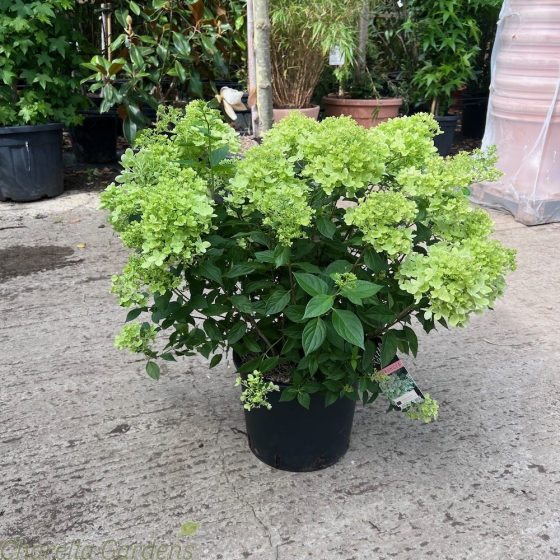
Hydrangea Paniculata Little Lime XL 10 Litre.
Large established plants in 10 litre pots, that will give adazzling display from year one.




Large established plants in 10 litre pots, that will give adazzling display from year one.







Hydrangea Paniculata Little Lim 10 Litre: Closely related to the more commonly known Hydrangea Limelight, Little Lime can be considered its new smaller younger sibling. As the name suggests this is not a large growing plant, but can still reach respectable heights of approximtely 1.2 metres with a similar spread, so not what can really be classed as small plant either. Flowers heads are supported by strong sturdy stems, flowers start the season lime green and fade to cream with touch of pink a sthe saeon progreses. Little Lime is ideal for pots, (always ensure a good supply of water if pot planted) and borders and in sun through to partial shade. Little Lime is a prolific flower that will flower annually on new wood.
Please keep in mind if purchased out of season these plants may appear to be quite small they have been cut back very hard to maintain a good shape (picture 2) and prevent them becoming to leggy, 1st picture taken early June.
.
Paniculata Hydrangea are not to fussy about where they are pruned, they will flower annually, however to enhance flowering and to avoid the plants becoming to leggy they are best pruned hard in early spring, cut back the previous season's shoots to within a few buds of the permanent, woody framework of the plant.
When should I prune back my Hydrangea:
We suggest waiting until Febrary/March when the frosts have gone. The dead flower heads will protect the plant over the winter months. When the frosts have finished cut it back by approximately a quarter and remove any weak or frost damaged shoots to the healthy wood.






